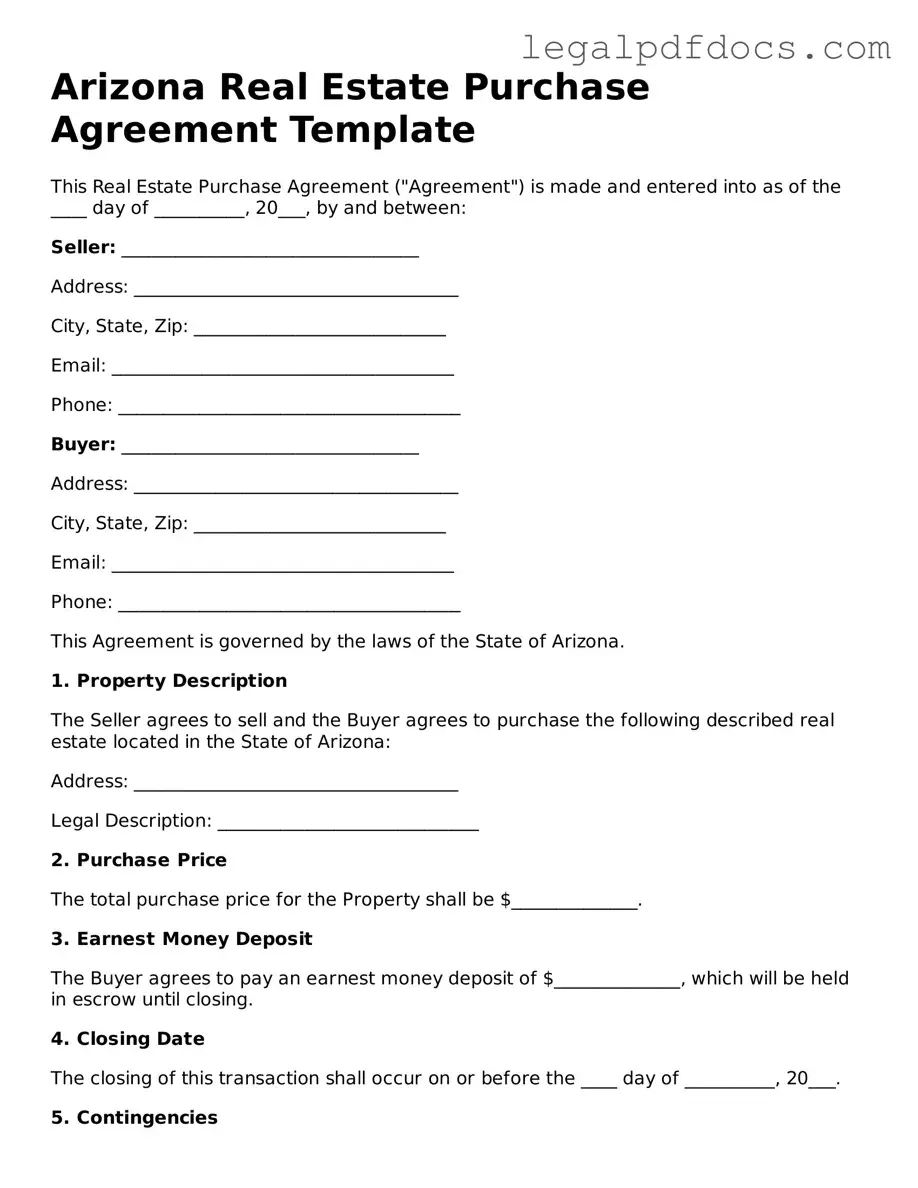Official Real Estate Purchase Agreement Form for Arizona
The Arizona Real Estate Purchase Agreement is a legal document that outlines the terms and conditions of a real estate transaction between a buyer and a seller. This form serves to protect the interests of both parties by detailing the specifics of the sale, including price, property description, and contingencies. Understanding this agreement is essential for a smooth real estate transaction in Arizona.
To fill out the Arizona Real Estate Purchase Agreement form, click the button below.
Open Real Estate Purchase Agreement Editor Here
